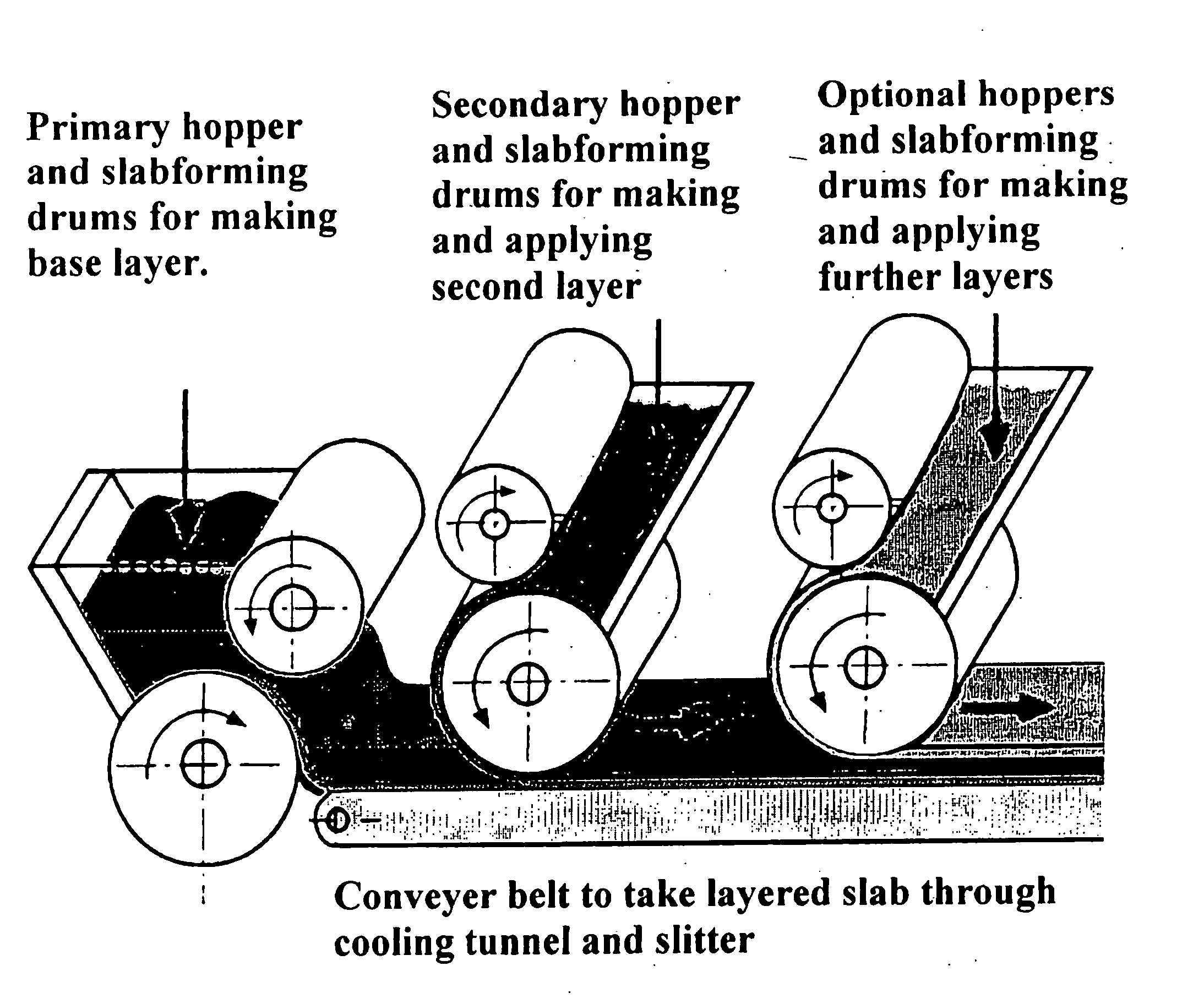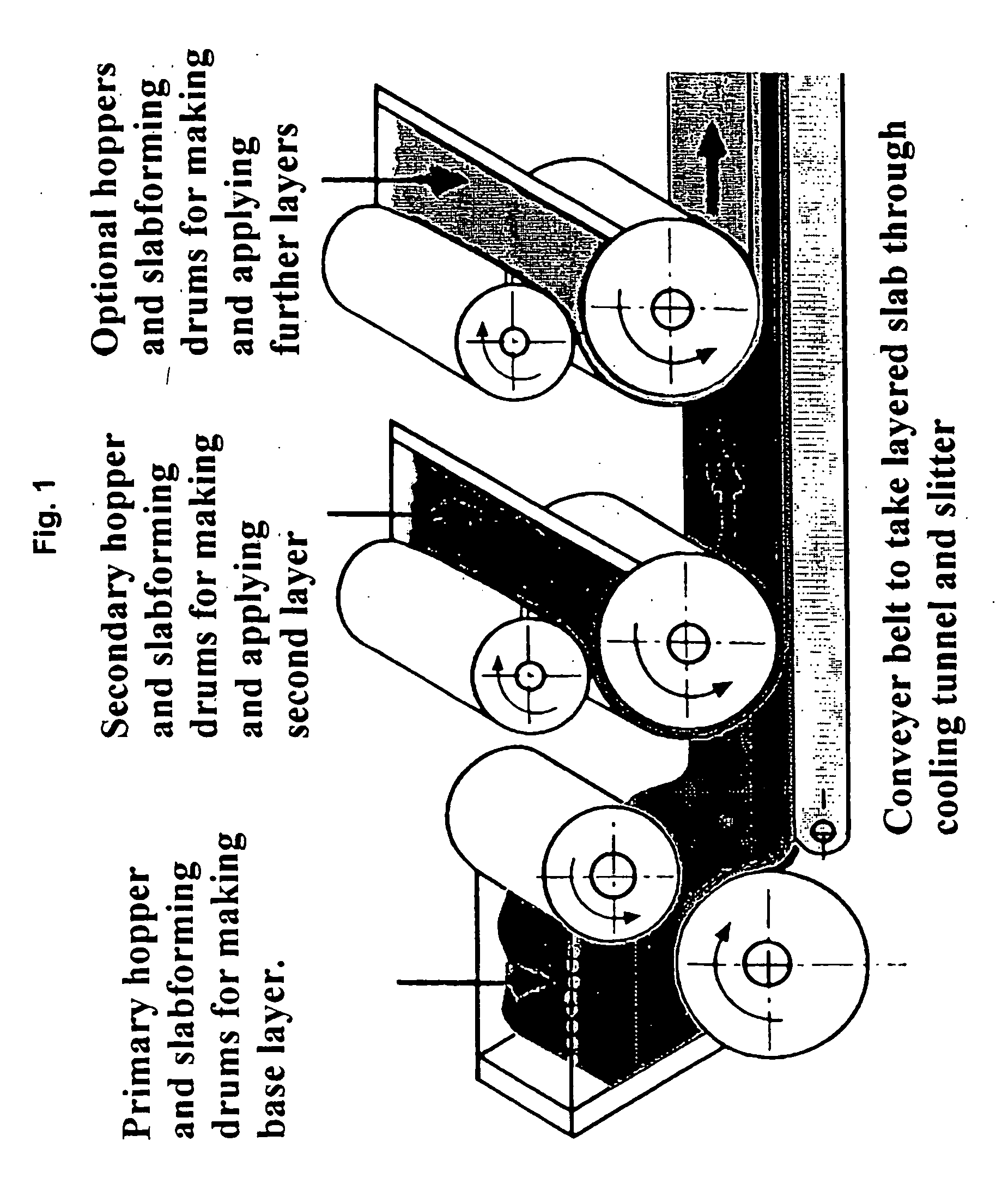Novel caramel food ingredients, processes for the manufacture thereof, and nutritional products containing these caramels
a technology of caramel and food ingredients, applied in the field of caramel food products, can solve the problems of insufficient nutritional value, inability to meet the needs of use,
- Summary
- Abstract
- Description
- Claims
- Application Information
AI Technical Summary
Benefits of technology
Problems solved by technology
Method used
Image
Examples
example 1
[0046] A novel caramel was prepared in the laboratory to the following formulation:
Water66.2gramsSucrose165.4gramsHigh maltose corn syrup411.0gramsHigh fructose corn syrup224.4gramsWheat gluten30.7gramsFractionated palm kernel oil26.2gramsSalt2.5gramsSoya lecithin1.4gramsNatural vanilla flavor2.2grams
[0047] All the ingredients except the wheat gluten were blended together and heated to 60° C. to dissolve the dry ingredients and melt the fat. The wheat gluten was then added slowly with stirring to the mix. Once a homogenous blend was obtained, the whole was further heated to 122° C. with stirring until the color changed to a dark tan. The caramel was allowed to cool, giving a semi-solid finished product that was flowable at temperatures above 60° C., and could be sheeted to give flexible layers that did not crack when deformed at room temperature.
example 2
[0048] A mixture of fruits, cereal products and soy nuggets was prepared by gentle mixing according to the following formulation:
Crisp rice150.0 grams Raisins150.0 grams Dried cranberries75.0 gramsDiced evaporated apples75.0 gramsAlmonds50.0 gramsSoy nuggets50.0 grams
[0049] This blend (500 grams) of particulate ingredients was then carefully mixed with 220 grams of the novel caramel from Example 1 that had been heated to 79° C. On cooling, the blended product was formed into bars. Comparison of the bars at time 0 with bars kept at room temperature for one month showed no change in organoleptic parameters.
example 3
[0050] A novel caramel was prepared in the laboratory to the following formulation:
Water246.0 gramsSucrose597.0 gramsHigh fructose corn syrup795.0 gramsHigh maltose corn syrup147.0 gramsDeamidated wheat gluten110.6 gramsFractionated palm kernel oil345.0 gramsMonoglycerides 16.5 gramsSalt 9.9 gramsSoya lecithin 15.1 gramsNatural vanilla flavor 17.9 grams
[0051] The sugar, salt and wheat gluten were blended until homogenous. The remaining ingredients with the exception of the palm kernel oil, lecithin and vanilla flavor were then mixed and heated to 60° C., after which the gluten / sugar / salt mixture was slowly added with stirring until homogenous. At this point, the fat and lecithin were added, and the whole heated to 122° C. with stirring until the solids content reached 89% and the color changed to a typical caramel color. The resultant caramel had a good caramel flavor and texture, was well emulsified, showed good binding properties, and could be held at 55° C. without any separati...
PUM
 Login to View More
Login to View More Abstract
Description
Claims
Application Information
 Login to View More
Login to View More - R&D
- Intellectual Property
- Life Sciences
- Materials
- Tech Scout
- Unparalleled Data Quality
- Higher Quality Content
- 60% Fewer Hallucinations
Browse by: Latest US Patents, China's latest patents, Technical Efficacy Thesaurus, Application Domain, Technology Topic, Popular Technical Reports.
© 2025 PatSnap. All rights reserved.Legal|Privacy policy|Modern Slavery Act Transparency Statement|Sitemap|About US| Contact US: help@patsnap.com


